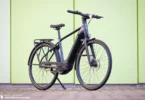Electric mopeds are an interesting and exciting alternative for bridging the short- to medium-distance gap. And what used to be dirty and loud is now sporty, elegant and, above all, quiet. So, we took a closer look at two brand new e-mopeds and put them to the test for you!
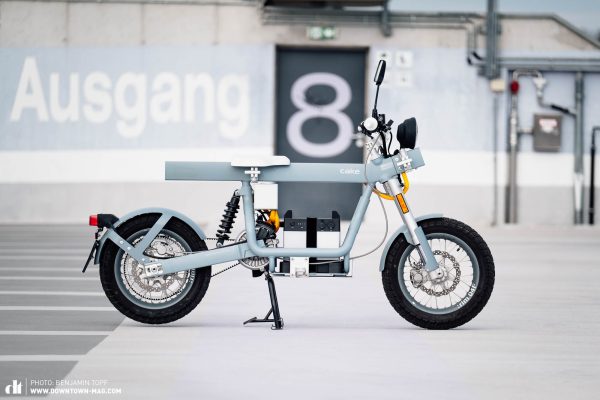

What are electric mopeds anyway? In short, e-mopeds don’t have pedals, relying on an electric motor and a throttle instead. In Germany, many of them belong to the L1e vehicle category with the electric motor limited to a top speed of 45 km/h. However, some models belong in the L3e vehicle category, which can go faster than 45 km/h.

The models of both classes require certain vehicle registrations and insurances, you’ll need the appropriate driver’s licence, and you must wear a helmet according to ECE standard 22, depending on the requirements in your country. Like mopeds with petrol engines and s-pedelecs, there are restrictions to using e-mopeds on public infrastructure: cycle paths and forest roads are usually off-limits. Among the pros of e-mopeds is that they’re quiet, produce zero emissions and suffer minimal wear and tear of the drivetrain, also making them great for short distances. On the other hand, they can be very expensive, the battery takes long to recharge when compared to a short stop at the petrol station and the range is limited. As you can see, e-mopeds are in direct competition with internal combustion engine mopeds rather than with ebikes or s-pedelecs.

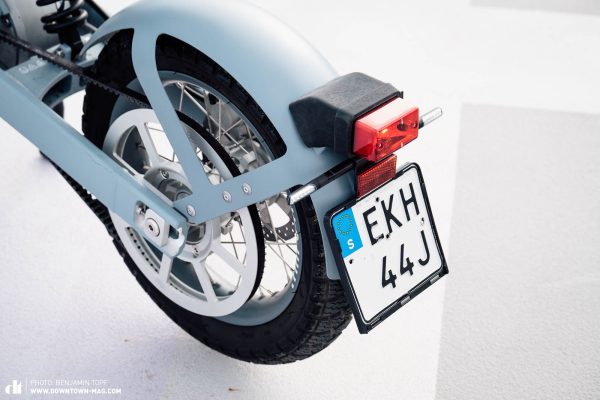
Why not compare them with ebikes?
E-mopeds and ebikes address a similar need: to transport people from A to B, usually in metropolitan areas. Therefore, they’re also in competition with each other to a certain extent. However, there are too many differences to make a direct comparison between ebikes and e-mopeds. While the electric motor of an ebike supports your own input, an e-moped relies purely on the motor. This also means that you won’t be able to ride an e-moped if the battery is empty. In addition, the two classes require different route planning, because ebikes are often not permitted on certain roads, whereas e-mopeds aren’t allowed on cycle paths. If you look at the L3e class of e-mopeds that can go faster than 45 km/h, then the ebike comparison also lags behind in terms of speed. Even the fastest ebikes, so-called s-pedelecs, are limited to 45 km/h at the most.
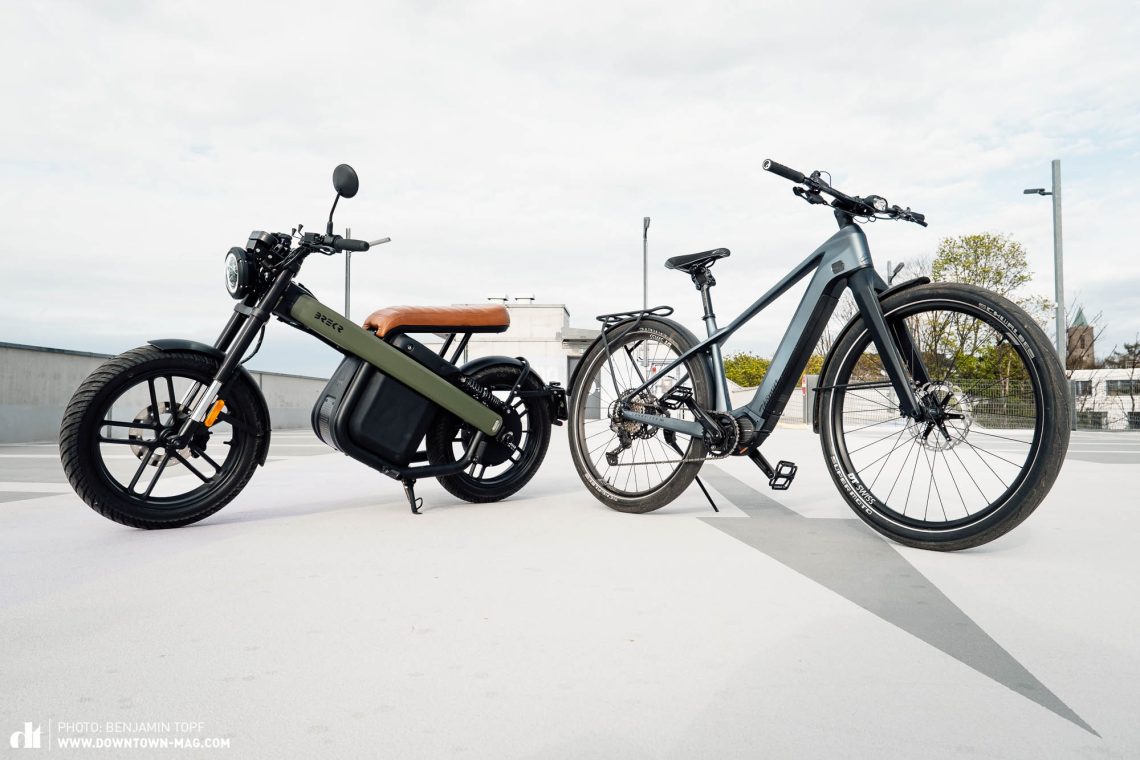
In contrast to ebikes, e-mopeds are usually required to have vehicle registration and insurance, depending on the country, which incurs additional costs. While the technically minded amongst us can do some repairs on an ebike themselves, repairs and maintenance on an e-moped are usually a case for the workshop, requiring specialist tools and knowledge. Therefore, the operating costs of e-mopeds are often significantly higher than those of ebikes. With the above in mind, ebikes and e-mopeds aren’t comparable – if you’re interested in a moped, you’ll usually be faced with the decision of whether your new vehicle should have an electric motor or an internal combustion engine. So, it’s worth taking a closer look at the differences and similarities between these two categories.
E-moped vs classic moped
This is the most logical comparison to make and there are advantages and disadvantages to both sides that you should weigh up if you want to make the right decision for you. The biggest pro on the side of e-mopeds is the fact that they don’t have an internal combustion engine. There are several other advantages that derive from this: for example, they’re almost silent and don’t emit any emissions locally. In other words, they’re quiet and don’t stink. So, if you don’t want to pedal but still want to experience the sounds and smells of nature, e-mopeds are the way to go. Due to the lack of emissions, they aren’t affected by possible inner city bans either, which is something we could see in the future.

In addition, electric motors have extremely little wear compared to combustion engines. Therefore, the maintenance costs of an electric moped are often lower than those of its petrol-driven counterpart. Another advantage of e-mopeds is their environmentally friendly image. On the other hand, they’re often significantly more expensive compared to combustion engine alternatives, recharging still takes a lot longer than refuelling at a petrol station and they can have less range.
E-moped vs electric car
Those who are interested in e-mopeds are typically interested in alternative vehicle concepts and therefore inclined to compare them with an electric car. We’ve thought of this, too, and we can say that an electric moped takes up significantly less space than an electric car. This doesn’t just make it a lot easier to find a parking space but also to navigate through the inner city. A two-wheeler can squeeze through small gaps in traffic, so you won’t be slowed down by traffic jams. Moreover, charging an electric moped is easier than charging an electric car. You won’t have to look for a suitable charging station even if you don’t have your own garage since many e-mopeds have removable batteries, which can easily be recharged inside your apartment. E-mopeds may be more expensive than classic mopeds, but they’re usually much cheaper than electric cars.
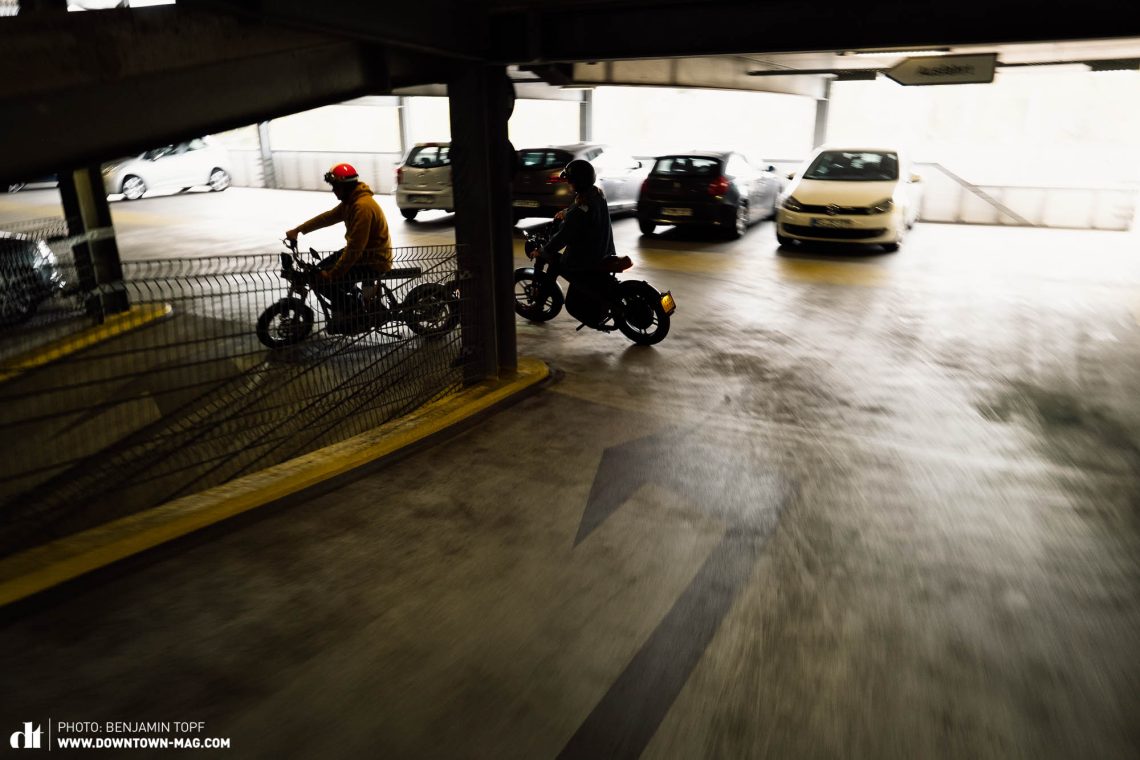
A free bonus is that they’re a lot more fun to ride and, if you’re in the countryside, you get the unfiltered outdoor experience. Of course, this can also be to the disadvantage of e-mopeds in bad weather. In that case, you’re completely exposed to the elements whereas you’ll stay dry and warm in most electric cars. In addition, an electric moped is less convenient than an electric car when travelling since it has fewer options for transporting luggage or passengers, and most of them are much more limited in terms of range.
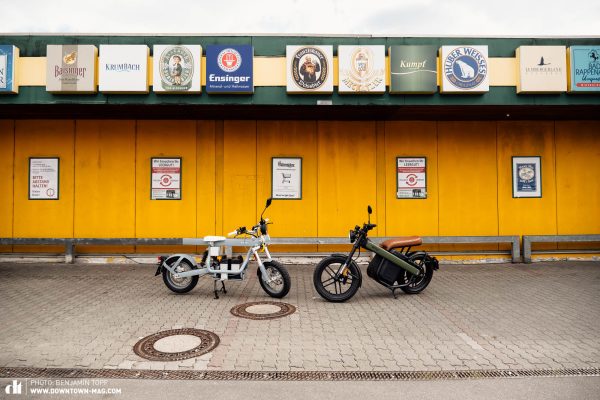

Electric moped – What to consider
In most countries, you need a driver’s license to ride an e-moped. Among other things, the type of license needed depends on the e-moped’s top speed. In Germany, category L1e e-mopeds require a category M driver’s licence from the age of 16, while holders of a category B license also are allowed to operate L1e vehicles. In addition, you must wear an ECE standard 22 motorcycle helmet – a bicycle helmet won’t cut it. Depending on the country or manufacturer, you may not be allowed to carry a passenger, even if it’s a child.
In any case, e-mopeds must be insured according to their vehicle category. On the upside, many countries want to speed up the transition to electric vehicles and offer various subsidies as incentives, whether it’s to curb emissions and climate change or because of other factors. Be sure to inform yourself about the subsidies, insurance and passenger regulations applicable in your country!

In review: CAKE Ösa Flex vs Brekr Model B
That’s enough about the theory, let’s talk about the real world. Scandinavian workhorse vs Dutch café racer – we tested and compared the CAKE Ösa Flex (review here) and the Brekr Model B (review here), which are two very different e-mopeds. They differ in terms of the motor concept, tire size and on-bike storage capacity. While the Brekr Model B relies on a hub motor, the CAKE ÖSA Flex comes with a mid-mounted motor instead.

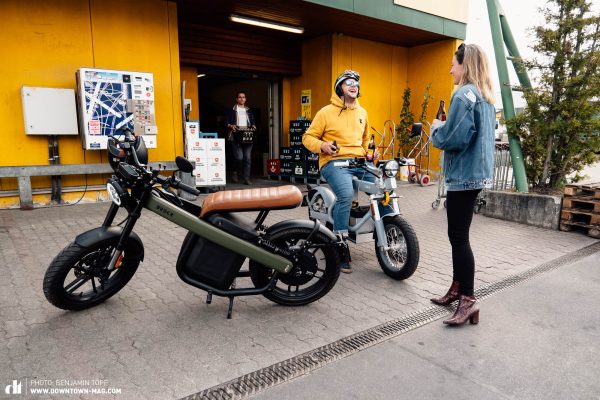

This makes little difference in terms of performance: both e-mopeds pull away from the traffic lights extremely quickly. In terms of range, the CAKE Ösa Flex has its nose at the front if you’ve only got one battery installed in the Brekr Model B. However, the range of both bikes is entirely sufficient for urban use. The bigger tires of the Brekr are more reminiscent of a classic motorcycle whereas the CAKE looks like a minibike with its smaller tires. Moreover, the bigger the tires in diameter, the easier they roll over obstacles or through potholes. This puts the Brekr at an advantage.
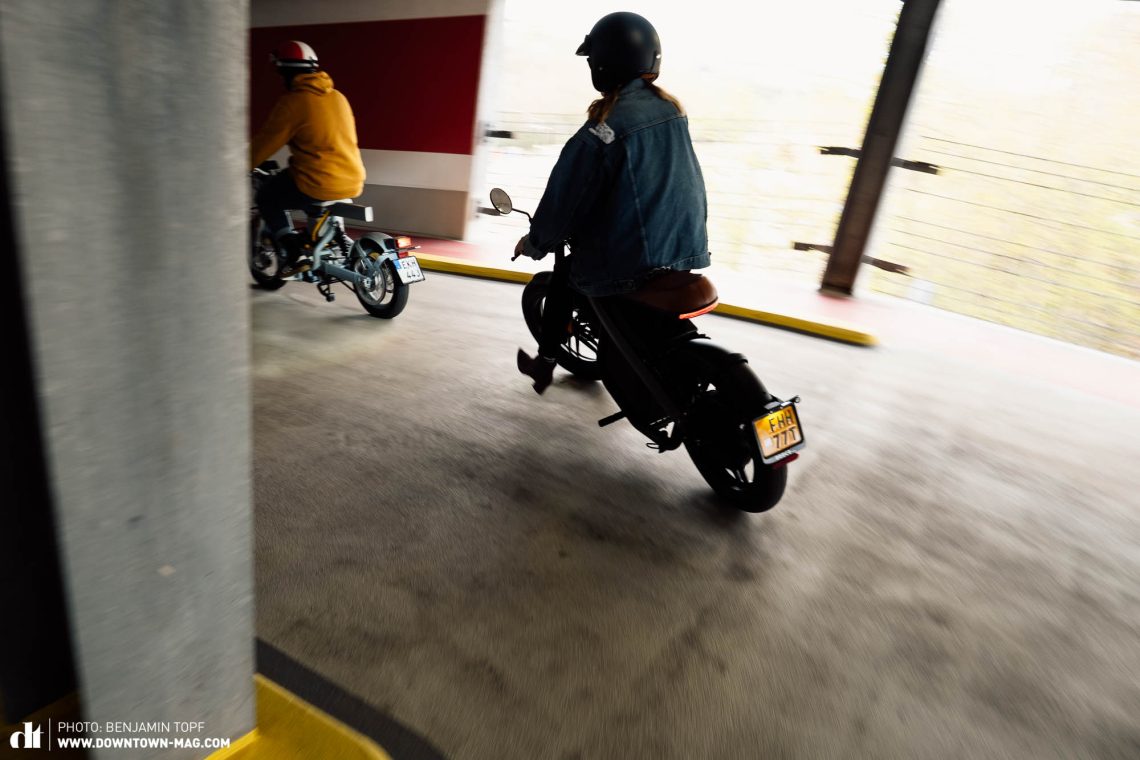
On the other hand, the Brekr doesn’t fare as well in terms of storage space and utility, simply relying on a small luggage basket in front of the seat and some space in the battery compartment – at least if you haven’t got a second battery installed. In this regard, the CAKE far outshines the Brekr with its modular luggage solutions. The suspension is very similar on both models, relying on a suspension fork and rear shock, though the suspension of the CAKE is somewhat more balanced overall. Both the CAKE Ösa Flex and the Brekr Model B are fun to ride. Ultimately, the decision between the two is a question of aesthetics or how much importance you place on storage space and utility.
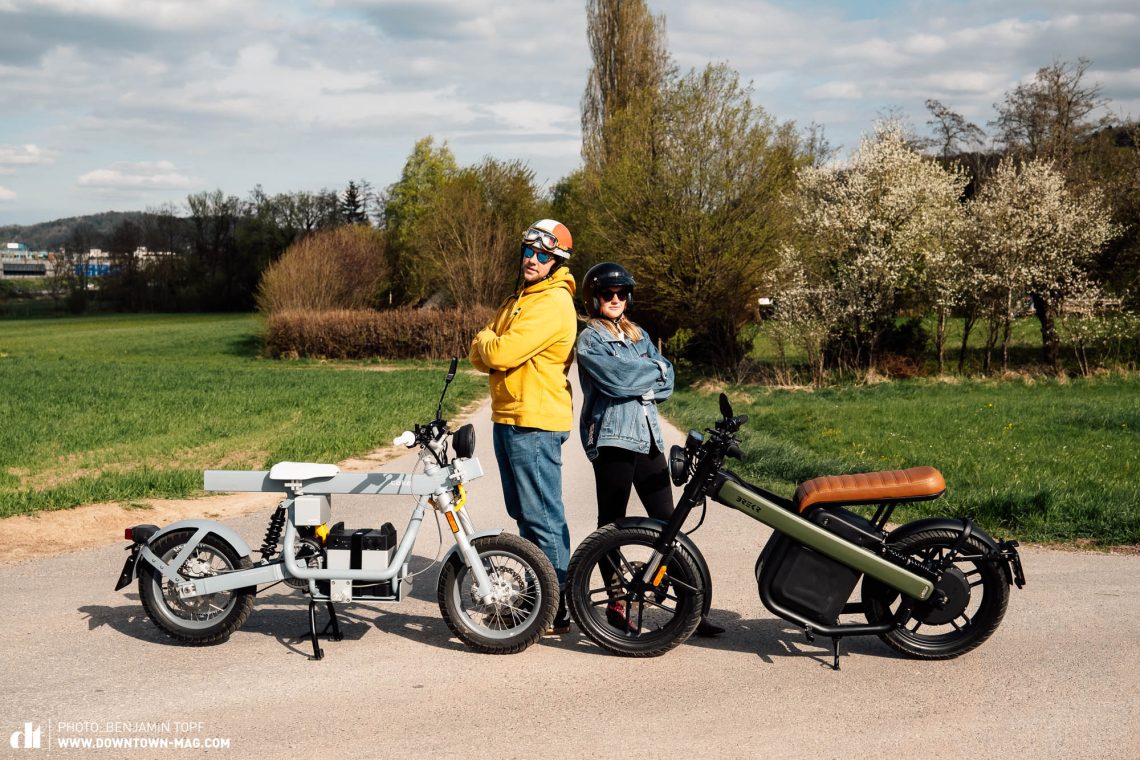
For whom is an e-moped the right vehicle?
E-mopeds are perfect for those who aren’t interested in getting exercise as they commute to work in the morning but still want to feel the wind in their hair and experience the outdoors. And those who no longer want to get stuck in traffic jams in their car or play human Tetris on the subway. And, of course, all those who live for the sake of e-mobility and the environment! If you’re looking for something more affordable, need more space or want to pedal yourself, you’ll be better off looking elsewhere.

Words: Photos: Benjamin Topf



